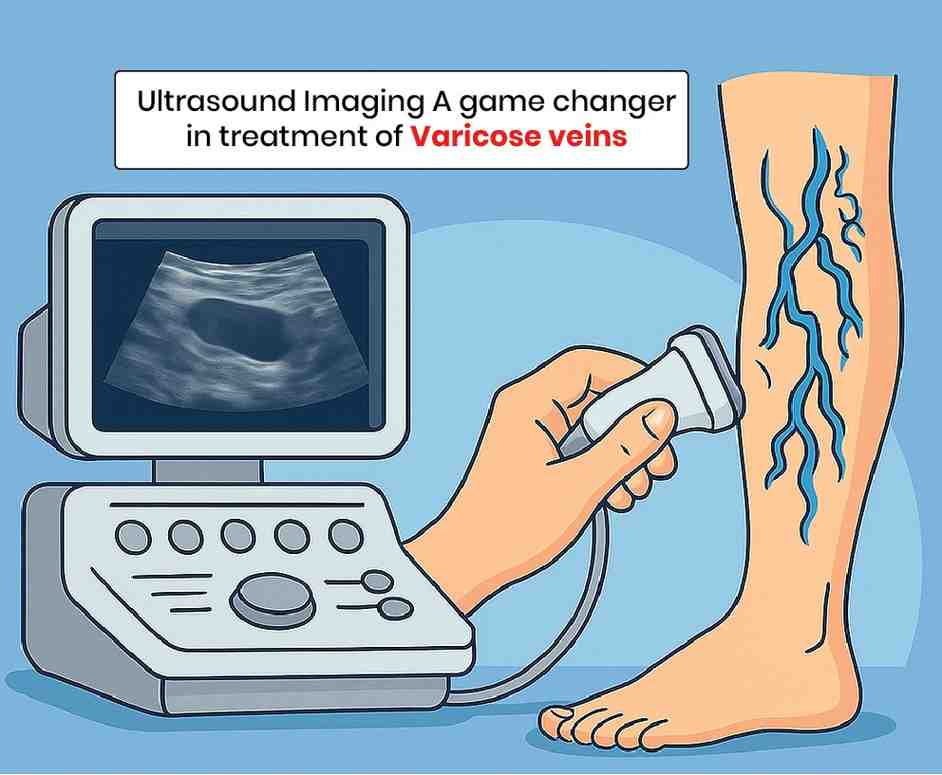Varicose veins, those bulging, twisted veins often visible just beneath the surface of the skin, are not just a cosmetic concern. They can cause significant discomfort, including aching pain, throbbing, and swelling. For years, treatments for varicose veins were limited and often invasive. However, the advent of ultrasound imaging has revolutionized the way healthcare professionals diagnose and treat this condition, offering patients more effective and less invasive options.
The Role of Ultrasound in Diagnosing Varicose Veins
Ultrasound imaging, specifically duplex ultrasound, has become an essential tool in the diagnosis of varicose veins. Duplex ultrasound combines traditional ultrasound, which uses sound waves to create images of structures within the body, with Doppler ultrasound, which measures the speed and direction of blood flow.
This combination allows doctors to not only see the veins but also assess how well blood is flowing through them. The detailed images and real-time blood flow data provided by duplex ultrasound enable healthcare providers to identify the precise location and extent of vein insufficiency, the underlying cause of varicose veins. This precision is critical for planning effective treatment.
Minimally Invasive Treatments Guided by Ultrasound
Ultrasound imaging has paved the way for several minimally invasive treatments for varicose veins. These procedures are often performed on an outpatient basis and require little to no downtime, making them highly appealing to patients.
1. Endovenous Laser Ablation (EVLA)
Endovenous laser ablation is a popular treatment for varicose veins. During EVLA, a thin laser fiber is inserted into the affected vein under ultrasound guidance. The laser energy heats and seals the vein from the inside, causing it to collapse and eventually be reabsorbed by the body. The ultrasound guidance ensures precise placement of the laser fiber, maximizing treatment efficacy and minimizing complications.
2. Radiofrequency Ablation (RFA)
Similar to EVLA, radiofrequency ablation uses heat to close off varicose veins. Instead of laser energy, RFA employs radiofrequency waves delivered via a catheter inserted into the vein. Ultrasound imaging is used throughout the procedure to guide the catheter and ensure accurate delivery of the treatment. RFA is highly effective and has a low risk of side effects, largely thanks to the precision provided by ultrasound guidance.
3. Ultrasound-Guided Foam Sclerotherapy
Foam sclerotherapy is another minimally invasive option for treating varicose veins. In this procedure, a foam sclerosant (a chemical that irritates and closes the vein) is injected directly into the varicose vein under ultrasound guidance. The foam causes the vein walls to stick together, leading to the vein’s eventual disappearance. Ultrasound ensures the sclerosant is delivered precisely where it is needed, improving the procedure’s success rate and reducing the risk of complications.
The Benefits of Ultrasound-Guided Treatments
The integration of ultrasound imaging into the treatment of varicose veins offers numerous benefits:
- Accuracy: Ultrasound allows for precise identification and targeting of problematic veins, ensuring effective treatment.
- Safety: Minimally invasive procedures guided by ultrasound have a lower risk of complications compared to traditional surgical methods.
- Comfort: Patients experience less pain and a quicker recovery with ultrasound-guided treatments.
- Cost-Effectiveness: These treatments often reduce the need for hospital stays and extensive postoperative care, lowering overall healthcare costs.
Future Directions
As technology continues to advance, the role of ultrasound in treating varicose veins is likely to expand. Emerging techniques and improvements in imaging quality promise even greater precision and effectiveness. Additionally, ongoing research into the underlying causes of varicose veins may lead to novel treatments that can be guided by ultrasound.
Ultrasound imaging has significantly improved the diagnosis and treatment of varicose veins, making it possible to offer patients safer, more effective, and less invasive options. With the continued evolution of this technology, the future looks bright for individuals suffering from varicose veins, providing hope for better outcomes and enhanced quality of life.
Incorporating the latest ultrasound techniques into varicose vein treatment protocols not only exemplifies the advancements in medical technology but also underscores the commitment to patient-cantered care. If you’re struggling with varicose veins, consult with a specialist to explore the ultrasound-guided treatment options available to you.




